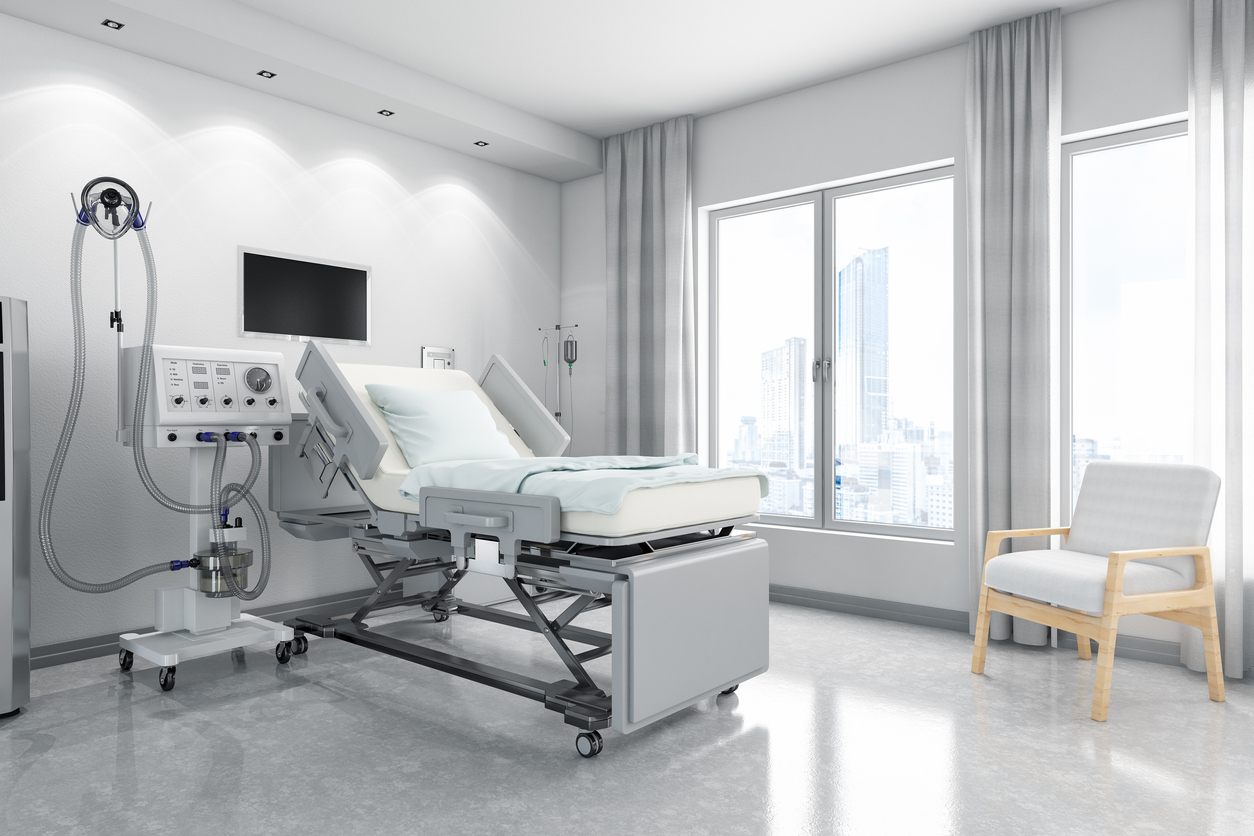
A mechanical ventilator is a device that supports breathing by moving air into or out of a patient’s lungs. Mechanical ventilation is one of several treatments for respiratory failure, but long-term ventilator use can cause lung damage [1]. When a patient is deemed ready, they are weaned from ventilation, ideally recovering their normal, spontaneous breathing faculties [2]. However, multiple factors in the weaning process can lead to higher risk of failure, including the patient’s underlying conditions, the specialist’s handling of the recovery process, and the specific type (also called “mode”) of ventilator used [2]. Advances in ventilator technology play a crucial role in improving the safety of mechanical ventilation, such as by facilitating weaning. In particular, neurally adjusted ventilatory assist may improve patient outcomes.
Many modes of ventilation follow a “partial assist” model: the patient initiates a breath, and the ventilator detects this attempt and provides assistance, resulting in a full breath. The most common example is the “pressure support ventilation” mode (PSV), where the ventilator detects pressure changes to determine breathing attempts [3]. In contrast, the mode called “neurally adjusted ventilatory assist” (NAVA) measures the electrical activity of the diaphragm, using an array of electrodes inserted into the esophagus across from the diaphragm [4]. Diaphragm movement is more accurate than changes in air pressure for detecting a patient’s attempted breaths.
The accuracy of detected breaths is correlated with better patient outcomes. In the literature, “asynchrony” refers to a mismatch between patient respiratory efforts and ventilator assists. For instance, when the patient inhales, their ventilator should respond promptly with an inhalation assist. Otherwise, when the patient exhales, their ventilator might still be inhaling, leading to “wasted energy expenditure” [5]. Consequences include stress or injury on the patient’s diaphragm, errors in the assessment of patient readiness, and worse overall outcomes [5]. If NAVA is more accurate than other modes, it has the potential to improve patient recovery, weaning, and outcomes.
NAVA was invented in 1999, but it began appearing in clinical trials around the late 2000s. Researchers sought to compare it against a proven baseline: PSV. A study from 2010 evaluated eleven patients with acute respiratory distress syndrome, finding that NAVA reduces asynchrony, stabilizes the volume of breaths, and improves patient-ventilator interactions [6]. An unaffiliated study from 2011 agreed that NAVA reduced asynchrony among patients with acute respiratory failure [7]. However, neither study assessed patient outcomes directly, a task left to later research.
In 2016, researchers in France studied 128 adults across 11 ICUs, comparing their outcomes and experiences with NAVA. Like previous studies, they concluded that NAVA reduces asynchrony. After leaving the ventilator, patients using NAVA reported less shortness of breath, and they were less likely to return to ventilation, compared to patients using PSV. However, NAVA did not reduce the duration of ventilation [8]. This finding conflicts with research from 2020 on Chinese patients considered “difficult to wean” from ventilation. For this subset of struggling patients, NAVA reduced the duration of ventilation and increased the proportion of patients with successful weaning [9]. These findings suggest that, overall, NAVA is effective in weaning patients and supporting their outcomes.
The future of NAVA appears promising, but current research has yet to explore several possibilities. First, a cost-benefit analysis could determine if providers should adopt NAVA on a wider scale. Second, clinical trials with other respiratory conditions, including severe cases of COVID-19, might improve the clinical credibility of NAVA. Finally, a redesign of NAVA could measure the brain’s respiratory center instead of the diaphragm, potentially increasing measurement accuracy and improving outcomes further.
References
[1] Respiratory Failure. (N.d.) Retrieved September 25, 2020 from https://www.nhlbi.nih.gov/health-topics/respiratory-failure.
[2] Boles J.-M., et al. Weaning from Mechanical Ventilation. European Respiratory Journal 2007; 29: 5. DOI: 10.1183/09031936.00010206.
[3] Dosch M.P. and Tharp D. The Anesthesia Gas Machine. March 2016. College of Health Professions, University of Detroit Mercy. Retrieved September 25, 2020 from https://healthprofessions.udmercy.edu/academics/na/agm/08.htm.
[4] Sinderby C., et al. Neural Control of Mechanical Ventilation in Respiratory Failure. Nature Medicine 2000; 5: 12. DOI: 10.1038/71012.
[5] Thille A.W., et al. Patient-Ventilator Asynchrony during Assisted Mechanical Ventilation. Intensive Care Medicine 2006; 32. DOI: 10.1007/s00134-006-0301-8.
[6] Terzi N., et al. Neurally Adjusted Ventilatory Assist in Patients Recovering Spontaneous Breathing after Acute Respiratory Distress Syndrome: Physiological Evaluation. Critical Care Medicine 2010; 38: 9. DOI: 10.1097/CCM.0b013e3181eb3c51.
[7] Piquilloud L., et al. Neurally Adjusted Ventilatory Assist Improves Patient-Ventilator Interaction. Intensive Care Medicine 2011; 37. DOI: 10.1007/s00134-010–2052–9.
[8] Demoule A., et al. Neurally Adjusted Ventilatory Assist as an Alternative to Pressure Support Ventilation in Adults: A French Multicentre Randomized Trial. Intensive Care Medicine 2016; 42. DOI: 10.1007/s00134-016–4447–8.
[9] Liu L., et al. Neurally Adjusted Ventilatory Assist versus Pressure Support Ventilation in Difficult Weaning: A Randomized Trial. Anesthesiology 2020; 132. DOI: 10.1097/ALN.0000000000003207.

